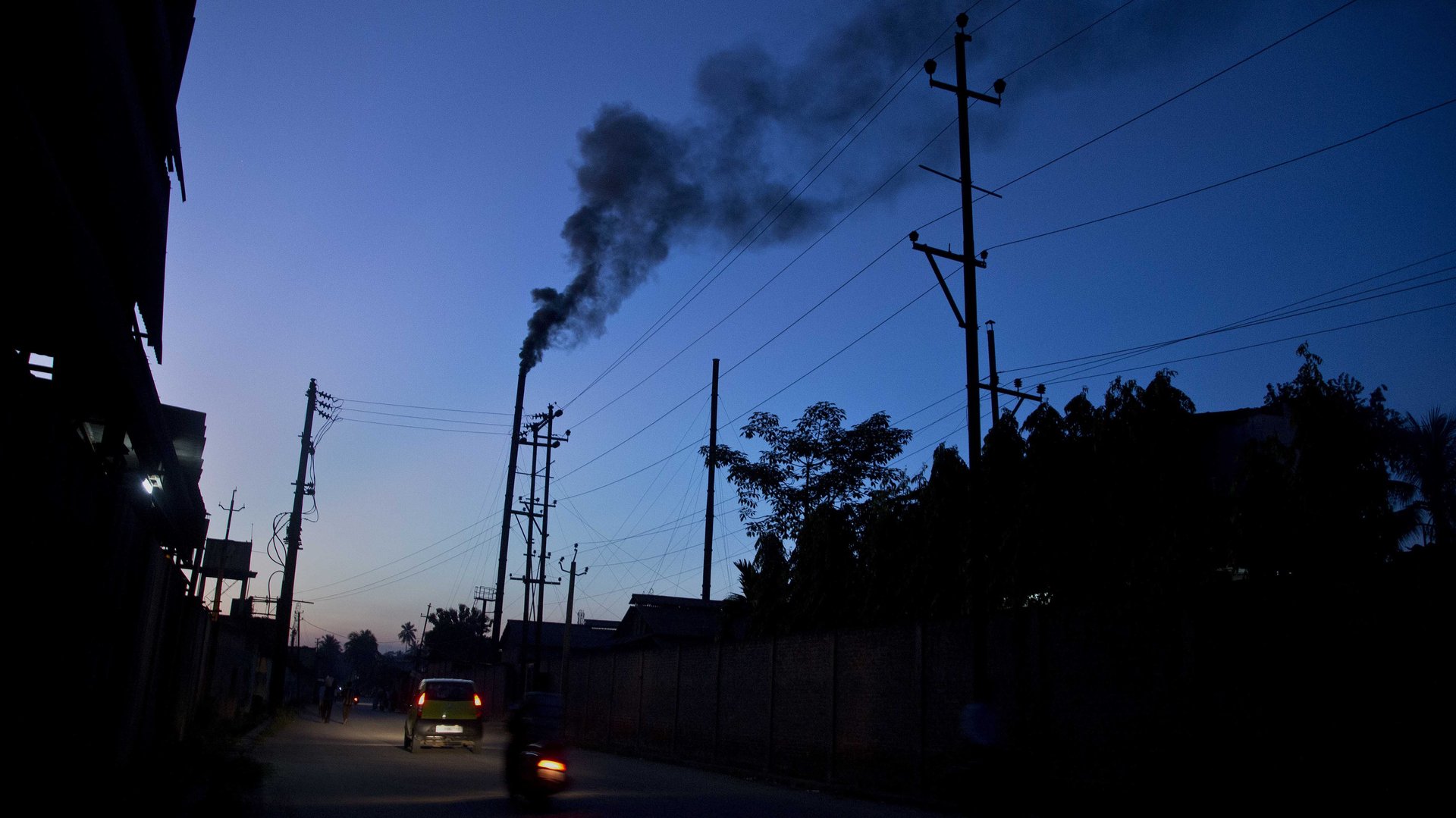India’s Gujarat state launches the world’s first programme to trade particulate air pollutant quotas
India is now home to the world’s first trading programme for particulate air pollution quotas.


India is now home to the world’s first trading programme for particulate air pollution quotas.
On June 5, world environment day, the western state of Gujarat piloted the scheme involving 350 industrial plants in Surat, a densely-populated hub of textile and dye mills as well as the diamond processing industry.
Under the programme, the government first caps the total amount of air particulate matter that can be emitted over a period of time by all the plants together. Then, permits, which allow a certain quantity of emissions, are allotted to each plant. These permits can be bought and sold on the National Commodity and Derivatives Exchange (NCDEX) starting Aug. 1.
Hence, plants can exceed their individual pollution quota by paying a premium to their peers who are more environment-friendly, but the total amount of pollution stays within the defined cap.
A team of academic experts, including Anant Sudarshan from the University of Chicago and Nicholas Ryan from Yale University, worked with the Gujarat government to build the programme.
Old problem, new solution
Though India does have regulations for industrial particulate pollution, “there is widespread non-compliance,” Sudarshan says.
The current rules are expensive to enforce, and “penalties are rarely applied, in large part because they involve punishments such as closing down the entire plant, which is not necessarily appropriate for small violations,” he adds. “In other words, the regulatory instruments are very blunt.”
An emissions trading platform allows businesses to be more flexible while also maintaining a strict limit on total industrial emissions, Ryan says.
“Many environmental regulations are concerned more with inputs—like whether an industry installs equipment, what that equipment costs, and so forth—rather than the results that are achieved,” he adds. “This programme flips that around, by focusing on the output—a hard cap on pollution emissions—and allowing industries to use whatever means they can to reach that goal.”
Emissions from the industrial units in Surat will be measured in real time by continuous emissions monitoring systems (CEMS), a technology that India’s central pollution control board (CPCB) has made mandatory for industries categorised as “heavily polluting,” such as coal-fired power plants and cement factories.
The expert team will also monitor the pilot. “We will compare the industrial plants brought under the programme to those not under the programme, to measure the impact on air pollution emissions and compliance costs,“ Ryan says.
Race against time
If expanded across the country, the programme could help mitigate India’s crisis of particulate air pollutants, especially those under the diameter of 2.5 micrometres (PM 2.5). Similar trading platforms have in the past reduced industrial emissions of sulphur dioxide and nitrogen oxides in the US.
However, critics have pointed to the difficulty in monitoring particulate emissions from industries in India’s giant informal economy. Calibrating the CEMS devices to prevent any fudging of data can also be tricky. The Gujarat pilot itself has taken nine years to see the light of the day.
However, with CEMS technology becoming cheaper and the CPCB’s push to make it mandatory in more industries, Sudarshan and Ryan say they remain hopeful of the emissions trading programme’s scalability.